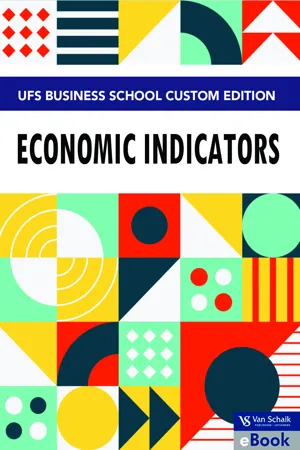Economics
Relative Wages
Relative wages refer to the comparison of wages between different groups of workers or different time periods. It is a measure of how much one group's wages differ from another, often expressed as a ratio or percentage. Understanding relative wages helps to analyze income inequality, labor market dynamics, and the distribution of earnings within an economy.
Written by Perlego with AI-assistance
Related key terms
Related key terms
1 of 4
Related key terms
1 of 3
4 Key excerpts on "Relative Wages"
- eBook - ePub
- Milton Friedman(Author)
- 2017(Publication Date)
- Routledge(Publisher)
13Wages in Different OccupationsIn discussing the supply curve of labor in general, we have taken for granted the structure of wage rates for labor of different kinds—Relative Wages in different occupations. This structure of wages is itself determined by the relative demand for and supply of labor of different kinds. The reason we have been putting it aside and are able to analyze it separately is because the major forces determining the supply curves of labor in particular occupations can be regarded as largely, though of course not entirely, independent of those determining the total supply of labor.At any given time, there will exist some structure of relative wage rates (or average earnings) in different occupations. It is useful to regard this structure as the result of three kinds of forces or phenomena producing differentials between wage rates in different occupations:1. Factors other than wage rates that affect the attractiveness of different occupations to individuals in a position to choose among them: Even if there were perfect competition, perfect and costless mobility, and all members of the population had identical abilities, money wage rates in different occupations would by no means be equal. Some occupations are less attractive than others and will therefore have to offer a higher wage than others if they are to attract people to them. Given differences in tastes, the precise set of differentials that will arise in this way depends not only on the characteristics of the occupations but also on the conditions of demand. If the demand for an occupation is relatively small, it may be possible to staff it entirely with people who regard it as more attractive than other occupations, in which case the wage rate would, on this score alone, be relatively low. If, on the other hand, the demand is relatively large, it can be met only by attracting people into the occupation who regard other occupations as more attractive, in which case the wage rate would have to be relatively high. Differentials in wage rates that arise from this set of forces may be termed equalizing differences. - eBook - ePub
The Structure and Determinants of Wage Relativities
Evidence from Australia
- Alison Preston(Author)
- 2018(Publication Date)
- Routledge(Publisher)
par excellence. The evidence thus lends support to the view that spillover forces are significant determinants of wage outcomes.Summary and Conclusion
The analysis in chapters 4 to 6 illustrates the presence of persistent and significant wage differentials by characteristics such as sex, sector of employment and industry of employment. These features are common to most labour markets and are not consistent with predictions from competitive wage theory. In the search for an understanding of such phenomena economists are increasingly turning back to the institutional or industrial relations literature where the emphasis is on normative determinants such as equitable or fair wage comparisons.Table 7.5Market variables and annual adjustments in award ratesNote: absolute t-statistics are in parentheses. Industry labels are defined in the appendix.Table 7.6Market variables and annual adjustments in award rates and economic variables: results for occupationTable 7.7The importance of comparative wage justice in explaining annual adjustments in award rates: results for industryNote: absolute t-statistics are in parentheses. Industry labels are defined in the appendix.Table 7.8The importance of comparative wage justice in explaining annual adjustments in award rates: results for occupationTesting the importance of normative forces or, more specifically, fairness, is not easy. Unlike many economic forces, normative determinants are often difficult to quantify. However, using Australian wage award data as a handle, this chapter is able to offer new insight into the importance of equitable comparisons and spillover forces wage determination.The results suggest that fairness is of more importance within bargaining units and within occupations (intra-occupational differentials) than across occupations (inter-occupational differentials). The results also show, consistent with other similar studies, that wage awards are only weakly related to market forces (specifically the price level, national productivity and the unemployment rate). In the period studied (1986 to 1997) spillover forces emerge as the dominant determinant of award wage adjustments. - eBook - ePub
- P Mohr, D Yu, S Adendorff(Authors)
- 2020(Publication Date)
- Van Schaik Publishers(Publisher)
Table 8-1 to transform the nominal wage to a real wage (at constant 2016 prices). For example, the index value for 2014 (86,2) is divided by the CPI (90,0) and the result is multiplied by 100 to obtain the index value of the real wage of 95,8 in column (d). The other entries in column (d) are obtained in the same way.8.2 WAGE DIFFERENTIALS
Apart from being interested in the absolute level of wages , both in real and in nominal terms, employees, employers and analysts are also interested in wage differentials , Relative Wages or the structure of wages . In other words, they want to know how the remuneration of an individual worker or group of workers compares to that of other individuals or groups. The main problem in this regard is to obtain accurate and comparable data on the remuneration of different individuals or groups. One official source of data on earnings is the Quarterly Employment Statistics (QES) published by Stats SA (as Statistical release P0277), with a time lag of approximately three months. These data, however, are averages for fairly large sectors or industries and subject to changes in definition or coverage. Although the data can serve as a useful benchmark, they have to be supplemented by other data before any meaningful conclusions can be reached in respect of the level of Relative Wages or changes therein.TABLE 8-3 Average monthly earnings in certain sectors of the South African economy, November 2018*Sector Average monthly earnings (R) Electricity, gas and water supply 44 228 Community, social and personal services 26 062 Mining and quarrying 25 510 Transport, storage and communication 24 770 Financial and business services 23 436 Manufacturing 18 510 Construction 16 528 Wholesale and retail trade, etc. 13 725 * Data include bonuses and overtime payment. Source: Statistics South Africa, Quarterly Employment Statistics (P0277), December 2018 (released on 26 March 2019).156 Table 8-3 - eBook - ePub
- John Roscoe Turner(Author)
- 2019(Publication Date)
- Routledge(Publisher)
CHAPTER XX THE PRINCIPLES OF WAGES1. Wages defined 2. Problems suggested 3. Wages differ from profits 4. Real and money wages 5. The wage-fund doctrine 6. The wage problem is forward-looking 7. Effect of machinery upon wages 8. Similarity of wages and rent 9. The same principles for unlike agents 10. How relative rents are determined 11. How Relative Wages are determined 12. Thought and execution 13. To illustrate 14. The wage system in proportionality 15. The bargain theory 16. The wage system 17. Equal wages for equal tasks 18. Wages equal the marginal product of labor 19. The time element 20. Exercises 1. Wages Defined.A wage is a price; it is the price paid by one person to another on account of labor performed. The employer agrees to pay the workman so much per piece or unit of output, or agrees to pay him a sum certain per hour, day, week, or month. The one payment is called a piece wage; it is payment for the amount of work performed irrespective of the time expended. If the laborer is making bolts at a piece rate of 20 cents he would receive $1 for an output of five, $6 for an output of thirty, and so on. The other method of payment is called a time wage. If the employee is paid $3 per day, his pay would be neither more nor less, whether his output be five or thirty bolts per diem. All other wage systems, such as profit-sharing or gain-sharing, are combinations of time and piece wages.2. Problems Suggested.Where large numbers of workmen are employed and the personal relations between the employer and workmen vanish, all laborers in a group receive the same wage. The most superior, even should he exert himself to the utmost, receives the same time wage as the most inferior workman. The first effect is to kill the incentive of the superior workman. Another effect is that the better men, unwilling to accept a wage fixed by the inefficiency of the poorest, organize unions to force from the employer a compensation in keeping with their work.
Index pages curate the most relevant extracts from our library of academic textbooks. They’ve been created using an in-house natural language model (NLM), each adding context and meaning to key research topics.
Explore more topic indexes
Explore more topic indexes
1 of 6
Explore more topic indexes
1 of 4



